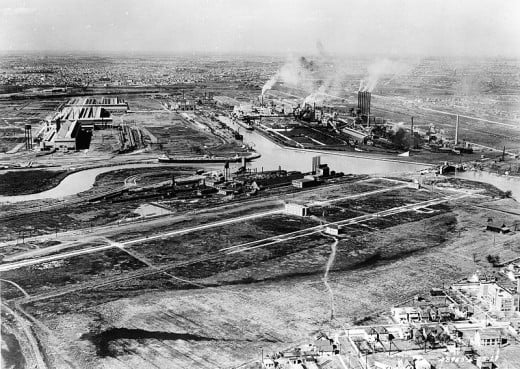
The Venetian Arsenal
venetian arsenal,venice,italy:
get directions

In summary
- Venice was a powerful economic and military city-state
- To maintain dominance and protect her interests, she had to be well equipped militarily
- Used mass production methods in the manufacture of ships and arms
- The arsenal employed over 16,000 workers
- Over 4500 ships manufactured
- Used sophisticated supply chain management methods
- Had the capacity to build one hull per day
- Was the first to use mass production techniques long before Henry Ford did it at the Rouge River industrial complex in the early 20th Century
The Venetian Arsenal
The arsenal had similarities to the modern way of producing goods using both the mass production and lean techniques:
- Standardized parts – The Arsenal introduced the use of standardized parts in ship building and these could be used in many product categories thereby reducing production time. The waste associated with rework was also reduced. This is a sharp contrast to the guild system of production where-by every part came out differently every time.
- Moving assembly line- this reduced the movement of workers during the production process because the product being produced moved to them and all they had to do was work on the section assigned to them and wait for the next piece in the line. The canal system in Venice was used to move large components like lumber through the production process.
- Continuous improvement – this principle of the lean production system was apparent in the Venetian Arsenal whereby there was a conscious effort to better processes and products. One important continuous improvement that happened was when the Venetians reduced the number of components used to assemble a ship, making it lighter and easier to produce.
- Engineering with production in mind also helped in increasing the quantity of ships produced. This concept, known as “design for manufacture” in modern parlance was clearly ahead of its time given the conventional production methods of the time.

Types of Production Systems
Historically, there have been three major production systems in the world of manufacturing goods:
- Craft or Guild System where artisans organised themselves into groups based on their industry. The master craftsman was an expert who took in apprentices and trained them over a long period of time until they gained enough competence. The goods produced in this system were of high quality but took a very long time to manufacture. The manufacturing process was full of waste and rework since there was no standard way of production
- Mass Production used standardized parts and assembly lines for manufacture of goods. This led to marked reduction of the cost of production and eventually the final product due economies of scale.
- Lean Manufacturing was an improvement on the mass production system. Essentially, the aim was to produce the highest quality goods with the least amount of waste in the value chain. The lean system aims at producing only what the customer wants, in the amount needed and at the time required. By improving effectiveness of the process, the time and resources required to produce goods reduced significantly while the quality got better.

Henry Ford’s Rouge River Complex
The River Rouge complex that Henry Ford established is a massive vertically integrated factory that produced all of the parts required for the manufacture of the early models of vehicles. There was even a steel mill that processed iron ore that was mined at Ford owned mines. The rubber used for the production of tyres was also produced in the same factory. It measures 1.6 Km by 2.4 Km with 93 buildings and 16 million square feet of factory space (source: www.wikipedia.com). The plant had its own electricity plant which catered for all the energy needed for conversion of raw materials into finished products. Apart from motor vehicles, the industrial complex also produced Eagle boats which were used as in anti-submarine warfare in World War 1.
Final Word
It is clear that the Venetian Arsenal had developed similar concepts as used by Henry Ford in the mass production system much earlier than had been thought. The available literature does not give a lot of details on the workings of the system used, but anecdotal evidence suggests a very efficient and effective production system. Further research needs to be done to clearly understand the thinking of this little discussed chapter in the history of production methods. I will be doing further research on this and will present it in my subsequent articles.


